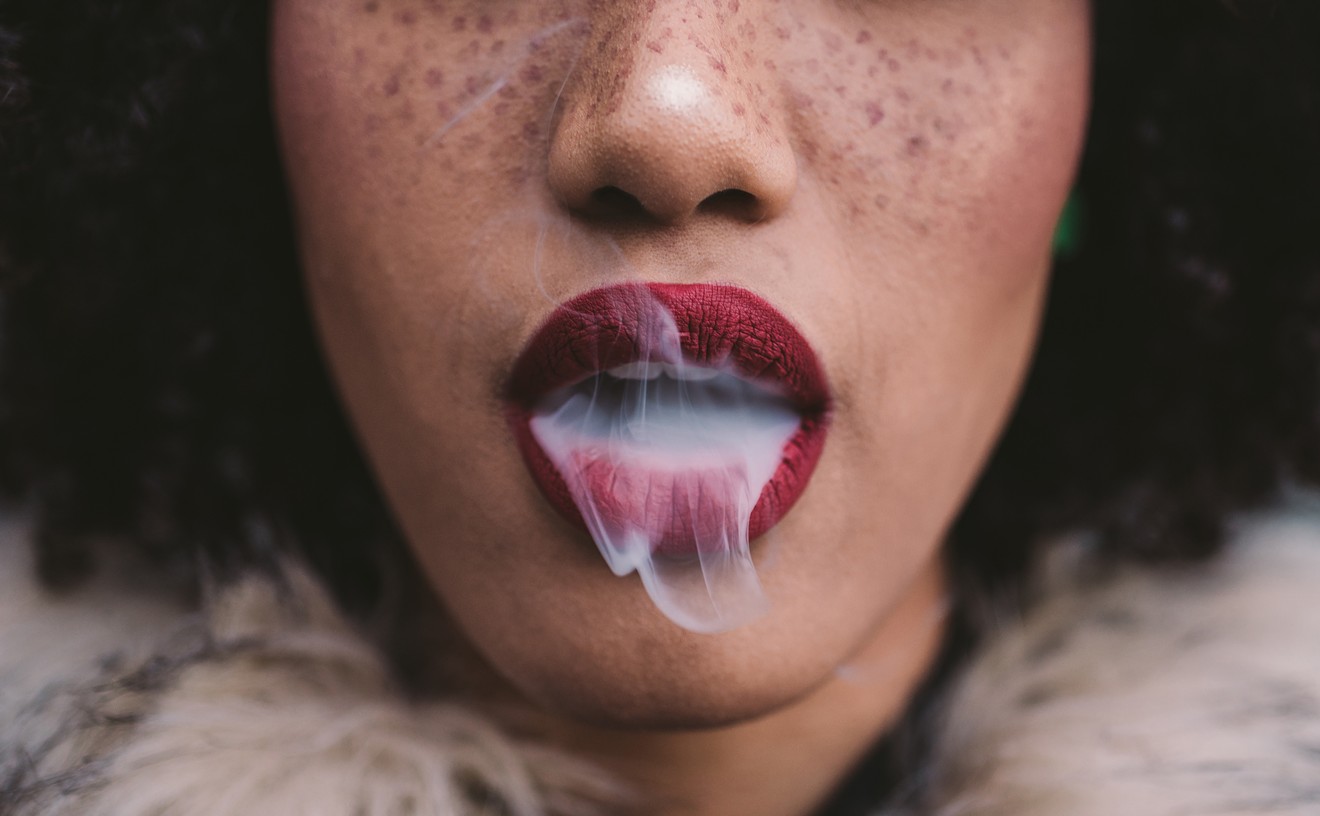Hancock is a young raconteur, and the story he tells goes something like this: In a peculiarly un-PC turn of thought, Hancock has dreamed up a world where Vegans live underground in stoic monochromy. Life for these would-be do-gooders is literally colorless until St. Sesom's prophecy. Sesom, the leader of the subterranean Vegans, discovers the fount of color in a dream. The tale that unfolds along the walls and in the space of the gallery reveals the Vegans' discovery and production of color by way of Miracle Machines. "Sesom's Mission" and "Sesom's Dream," mixed-media works on canvas, offer postmodern pastiche disciplined by the tightness of narrative storytelling. The masterfully delineated surrealist form of Sesom's swirling body plays against surfaces both built up with paint and found stuff and negated of anything--void spaces that have been literally cut out from the plane of the canvas. Along the wall, Hancock has written the lyrical story in large painted words, exhorting us "Behold! Sesom! I am painter, and these are colors!...Vegans weren't always the little pricks we know them as today." At the center of the main gallery hang four multicolored carpets, clad with everything from lint and coiled string to a squashed empty orange juice carton, that create an open-seamed room and the interior of Sesom's chamber. There sit remnants of a cheesy '70s wooden bedroom set, with the chests of drawers transformed into felt-covered speakers. The synthesized sounds of a Hammond B3 organ and acrid wafts of paint-cum-Pepto invite ears and nose alike.
Hancock's extraterrestrial imagination has been cultivated by life in the Texas outback. Though global critical acclaim has made him a citizen of the world, his experiences growing up and learning his trade at a university in the heartland have made him who he is. Born in Oklahoma City, Hancock went to Texas A&M-Commerce, where he trained with the local graphic artist and painter Lee Baxter Davis. Like others who have emerged from the roiling warm waters of this rural cauldron, such as Robyn O'Neil, Greg Metz and Ric Heitzman, his work is figural and intimate. Hancock reintroduces the personal to the public, the specific to the general, the particular to the universal.
The pieces reveal craftsman-like skill while also confiding in us wack stories that emerge from the deep crevices of his psyche. This is work about Hancock the Artist--his talent, adroit hand, gesture, creative mind and life experience. Though a fantasy, the experience of this project feels more like reading Hancock's diary than a fictive novel. His approach is part of a broader shift in art that has been on the make for at least five years now, if not longer. Hancock's raucous imagination serves as a vehicle for the return of that once-lambasted, now-lively figure of the "I"--the ego, the Cogito, the "I think" in Descartes' adage "I think therefore I am." The crafty hands-on personalism of young artists showing in this year's Greater New York show back in the spring and the ongoing six-part exhibition of painting at the Saatchi Gallery in London, called The Triumph of Painting, are further proof that the "I" is re-staking his claim. We recognize his return by his brazen will to gesture, scratch and smudge: to reinforce his presence by way of individual and private marks. Far different from his origins--the head of that beacon of Enlightenment, Descartes--the "I" in its current reincarnation has sprung from the shaky grounds of the present.
In the greater scheme of things, we might look to 9/11, the war in Iraq, Katrina, and now Rita (so many replays of the Romanticism-driving Lisbon earthquake of 1755) as sources for this romantic turn inward to the navel, away from that other more deadpan and impassive form of heroics located not so long ago in the very opposite of worlds, those informed by the Post-Structural "death of the author" and "post-humanist subject." Back then, we were all conscious, circumspect and sophisticated postmodernists, and the humanist "I" was the ego of dread--the source of colonialism, imperialist war, global inequity and global warming. Recent events have shaken our sense of "knowing unknowing," and systematic doubting has given way to the whim of personal marks, plaints and emotional appeal.
The pivot upon which this shift turns is language. We have seen the transformation of the artist as critic and theorist to the artist as descriptive storyteller. Whereas yesterday's Minimalists and Conceptualists such as Donald Judd, Robert Smithson, Joseph Kosuth and Mary Kelly used language to critique and theorize art as a means to defer the presence of the ego, the language of Hancock's piece is narrative, sheer storytelling from the mind's eye. The literal narrative of Hancock's work and the narrative marks of young Greater New York artists and the new stable of painters at Saatchi reinforce the presence of the "I"--the unapologetic ego of a would-be heroic artist--that is at the root of the personalized idiom. Though for some the shift might mark a move from one mode of braggadocio to another, the turn is very substantive. In the move to the personal we have lost something very important, namely the resistance that came with difficult texts, recalcitrant ideas and the self-effacing disavowal of the ego. In turn, we have gained, well, what? A return to craft and the reinvigorated self--the "I" that not so long ago jauntily erased itself in the manner that Rauschenberg erased a De Kooning.










